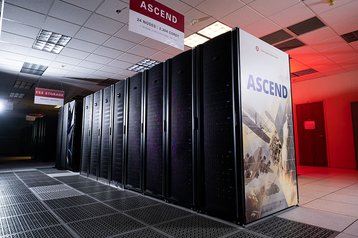The Ohio Supercomputer Center (OSC) has unveiled its Cardinal high-performance computing (HPC) cluster which reportedly doubles the center’s AI processing capacity.
Named after the state bird of Ohio, the Cardinal system is a collaboration between Intel, Dell Technologies, Nvidia, and the OSC, and is due to go online in the second half of 2024.
Cardinal will feature Dell PowerEdge servers and 756 Intel Max Series CPU 9470 processors which provide 39,312 CPU cores, in addition to 128GB HBM2e and 512 GB of DDR5 memory per node.
Thirty-two nodes will have 104 cores, 1TB of memory, and four Nvidia H100 Tensor Core GPUs with 94 GB HBM2e memory interconnected by four NVLink connections. A further 16 nodes will have 104 cores, 128 GB HBM2e, and 2TB DDR5 memory for large symmetric multiprocessing jobs.
Nvidia Quantum-2 InfiniBand will provide 400GB per second of networking performance to deliver 500 petaflops of 'peak AI performance' for AI-driven scientific applications.
“OSC has experienced exponential growth in use over the last few years, and the new cluster will help Ohio meet and exceed the demands coming from our colleges and universities as well as the private sector,” said David Hudak, executive director of OSC.
“With this new technology, we can empower the rising number of disciplines using HPC for research and innovation, foster the expanded use of AI and machine learning, and serve the growing number of higher education classrooms using OSC resources to train the next-generation workforce.”
Established in 1987 and based at the Ohio State University campus outside Columbus, the OSC is a statewide resource providing high-performance computing services and expertise to Ohio university researchers and Ohio industries.
The OSC is already home to the Pitzer and Ascend clusters. The Cardinal will replace the OSC’s eight-year-old Owens cluster, which will be taken offline three months after Cardinal starts production.
The center's three current clusters provide OSC with a total of 5.5 petaflops, 20 petabytes of storage, and 23 petabytes of expandable backup storage. Ascend was the center’s first dedicated GPU platform.







